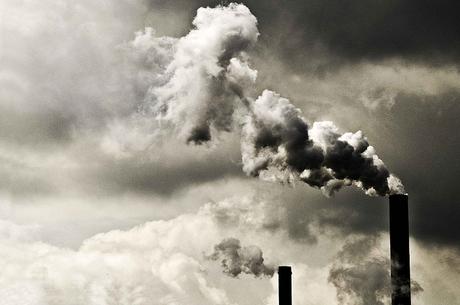Sources and Effects of Common Air Pollutants
Air pollution is a growing problem around the world, with individuals and nations alike pumping enormous volumes of harmful pollutants into the atmosphere every day. These pollutants are not only dangerous to the health and wellbeing of plants, animals, and people, but they are also a major contributor to recent climate shifts observed across the globe.
Cutting down on the volume of pollutants produced is a crucial step in managing our negative effect on the climate. How can this be achieved? One of the first and most important steps is identifying some of the most common and prevalent pollutants, understanding where they come from, and recognizing their effects. This knowledge will help you to identify the key ways in which you can cut down on air pollution and contribute to a global decline in the volume of pollutants found in the air.

With this in mind, here are some of the most important pollutants to know.
1. Carbon Monoxide (CO): Carbon Monoxide is a highly toxic and dangerous pollutant, infamous for its lack of identifying color and smell. At one point, this gas was extremely prevalent in homes for use in domestic heating before it was found to be unsuitable, and it has since been replaced by much safer solutions such as natural gas and electricity. However, this gas is far from extinct in human use.
Sources: Most commonly, Carbon Monoxide is produced by combustion engines running without modern catalytic convertors. Other common sources of Carbon Monoxide are old gas and fuel appliances, incinerators, and even cigarettes.
Effects: Carbon Monoxide can have a profound effect on the environment as it is extremely poisonous, and can contribute to very dangerous ground-level air and ozone conditions.
2. Lead (Pb): Lead has long been known to be a dangerous substance. Once commonplace in nearly all gas and aviation fuels, there has since been tremendous effort to reduce the amount of lead found in these substances. Since the introduction of lead-free gasoline, the volume of lead in the atmosphere has dropped enormously.
Sources: While efforts have been made to remove lead from fuel, it continues to be present in some aircraft fuel. Similarly, the outpouring of lead from metal processing plants, and the release of lead from waste processes such as incineration and battery acid production means that there is still enough lead in the air to recognize it as a dangerous pollution.
Effects: Lead can not only poison humans, but it also has a profound effect upon natural ecosystems. Contaminating air, soil, and water, lead can cause damage to flora and fauna alike.
3. Ozone (O3): Ozone is not inherently bad. After all, the ozone layer is one of the major protections mankind has against harmful solar radiation. However, ground level Ozone has become a major problem in recent years.
Sources: Ground level Ozone is formed by chemical reactions between multiple different oxides found in the air, which – when exposed to sunlight – can form new compounds and leave Ozone as a by-product. The majority of the emissions which make up Ozone come from the usual suspects such as car exhausts, factory processing, electric utilities and power plants, and even some chemical solvents.
Effects: Ozone is a dangerous substance for most living organisms, and as such an increase in ground level Ozone has a notable effect on human health as well as the overall health of multiple ecosystems on land and in the seas.
4. Nitrogen Dioxide (NO2): Nitrogen Dioxide is one of the oxides which can react to produce Ozone, but that is far from its only negative effect. Nitrogen Dioxide is one of the gases that one most commonly thinks to when considering air pollution: thick, brown, and choking, it is one of the more visibly harmful pollutants.
Sources: Nitrogen Dioxide, like many other pollutants, is most often released into the atmosphere by the burning of fossil fuels in car engines, airplane engines, factories, and power plants.
Effects: In addition to being a choking and obstructive gas in the air, Nitrogen Dioxide also has the propensity to react with other agents to form nitric acid and organic nitrates, contributing to the formation of acid rain.
Needless to say, Nitrogen Oxide has a huge effect on humans, increasing the likelihood of respiratory problems, cancers, and other lung problems. Acid rains produced by Nitrogen Dioxide are extremely harmful to plants and animals across the world, and can lead to further problems in water systems.
5. Sulfur Dioxide (SO2): Sulfur Dioxide is a substance most closely associated with the steam age and locomotives, as the biggest culprit in its production is coal combustion. However, these days are not so far gone as you may have thought.
Sources: To this day, locomotives, ships, planes, and other equipment still produce huge volumes of Sulfur Dioxide. Industrial processes, particularly ore extraction and purification, are also producers of the gas.
Effects: Sulfur Dioxide, like Nitrogen Dioxide, is a compound which often mixes with other pollutants in the air to form harmful acids, but it is also harmful on its own. Common effects of Sulfur Dioxide poisoning are respiratory problems, eye problems, and even heart and circulatory problems. Importantly, Sulfuric Acid, created by the mixing of sulfur with water, is a potent acid which is not only destructive to human property but also to trees, soils, and water systems.
6. Particulate Matter (PM): Particulate Matter is something a lot more visible and tangible than the components listed above, but is no less dangerous or harmful. The matter generally consists of soot, dirt, and chemical byproducts produced through combustion or chemical mixing.
Sources: Particle matter is produced by nearly every single process involving chemicals and fuels, as well as more innocuous processes such as farming and road construction. Any process which produces a physical byproduct will generally result in particulate matter.
Effects: Particle Matter ranges from annoying to extremely dangerous, often hampering visibility on roads and causing respiratory problems. Particulate Matter is associated with a range of heart, lung, and eye conditions in humans, and is also linked to an increased likelihood of developing cancers later in life.
While a lot of work has been done to reduce the prevalence of Particulate Matter in the air, it still comprises a considerable risk to public health as well as to environmental integrity. Particulate Matter is especially harmful to animals in the wild, with mammals being disproportionately affected due to their size and comparatively sensitive respiratory systems.

What Can You Do To Help Reduce Air Pollution?
So what can you do to help reduce air pollution?
- Raise awareness. Whether it be through joining non-profits, activist groups, or even just posting about the matter online, raising people’s awareness about air pollution and its causes is an important step in reducing the problem around the world.
- Try to minimize travel in cars and airplanes. While driving is often unavoidable, there are many who could quite easily cut down on their fuel consumption by making use of public transportation or even bikes. Similarly, making use of a more fuel-efficient vehicle is a good way to make the car travel you do undertake much less harmful. Keeping a car serviced and safe will dramatically improve its fuel-efficiency and reduce the volume of emissions it releases. Airplanes are among the worst contributors to air pollution, so consider staying in the country when vacationing.
- Conserve energy where possible. Since electricity production releases a huge number of air pollutants, using as little energy as possible can help minimize the amount produced in any one day. If you spread the message too, you can have a noticeable impact on electricity production. Simply changing lightbulbs to energy efficient alternatives, turning off appliances when not in use, and reducing the amount of time spent in front of the television or on the computer are good starts.
- Make use of 3 R’s. Who wouldn’t have heard of 3 words Reduce, Reuse and Recycle. Reduce simple means reducing the consumption of goods like plastic bags that can hurt the environment. Reuse means reusing the same thing for some different purpose; like reusing the old jar for storing cereals or pulses. Recycling stands for recycling old items so that they can be made into some useful products again.
- Get your car’s engine tune up. Keeping your car’s engine tune up will make sure that it does not consume more fuel and gives you a better mileage.
- Keep tires properly inflated. Cars consume more gasoline when tires are not properly inflated. Keep the air pressure to optimum level will reduce your impact on the environment.
- Make use of renewable electricity where possible. Installing your own solar panels for even small tasks can help to conserve electricity which would otherwise be provided by power plants.
- Get energy audit done for your home. Get energy audit done and ask the auditor about changes that you can make in order to ensure that your home is as energy efficient as possible. They can give you recommendations that will help you out and even save you money in the long run.
- Consider going green. There are various ways to go green without even spending a extra penny. For e.g.: use public mode of transportation instead of car, opt for eco-friendly hotels when go out on a holiday, buy items with less packaging, buy energy-efficient appliances, use daylight as much as possible, avoid buying plastic water bottles, and many more.
- Plant trees and plants, as these can help to increase the amount of breathable air available, and reduce levels of certain pollutants that cause harm to the environment.

